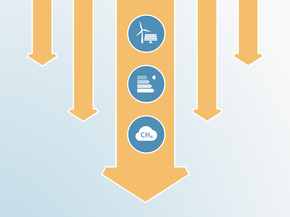Country summary
Overview
Recent actions by the Japanese Government strongly suggest that it has no intention in the foreseeable future of revising its “Highly Insufficient” 2016 Paris Agreement (NDC) target to a more ambitious one. The Japanese government declined the request to co-lead with Chile on the mitigation strategy workstream for the UN Climate Summit in September 2019. The government's current policies are projected to meet its "Highly Insufficient" 2030 NDC target, an outcome which is quite inconsistent with the Paris Agreement’s goals.
Coal remains a major concern. Japan's coal plant construction plans, which could add a possible 13 GW of coal power (which is not CCS-ready), remain a major concern. We project that coal could continue to supply a third of Japan’s electricity in 2030 without a further push for renewables. Moreover, Japan has also been a major funder of coal-fired power plants overseas, alongside China and South Korea. While Japan’s public finance institutions haven’t changed their stance on coal, the private sector is showing signs of change: since May 2015, an increasing number of financial companies and major trade corporations have announced at least a partial divestment from coal power.
The long-term strategy the government submitted in June 2019 also demonstrates Japan’s weak ambition – it aims to reach net-zero emissions “as early as possible during the second half of the 21st century”, which is far from the kind of action required to achieve the Paris Agreement’s long-term temperature goal, especially in the light of Japan’s common but differentiated responsibilities.
The long-term strategy also shies away from committing to a complete phase-out of coal-fired power generation, even in the long-term, and instead emphasises carbon capture and storage (CCS) and carbon capture and utilisation (CCU), technologies which are not currently commercially available, to justify the continued use of the most polluting of fossil fuels.
One major positive policy development is in the transport sector, where the Government, together with all major car manufacturing companies, is planning to set a long-term target of reducing tank-to-wheel CO2 emissions by 90% below 2010 levels by 2050 for new passenger vehicles, assuming a near 100% share of electric vehicles.
Other positive developments include the proposed stricter regulations on the hydrofluorocarbon (HFC) recovery from end-of-life appliances as well as the raised energy efficiency standards for automobiles and buildings. It is also worth noting that Japan started to increase the support for the development of off-shore wind power. Furthermore, the long-term strategy reiterates Japan’s commitment to develop hydrogen as a major decarbonised fuel, for which a national strategy was established in 2017.
Subnational and non-state actors are also becoming increasingly active—the Japan Climate Initiative was launched in October 2018 to accelerate the transition toward decarbonisation, and, as of November 2019, has more than 425 member organisations.


Japan’s future emissions are challenging to predict, owing to uncertainty around the future role of nuclear, coal and renewable energy. We assess that the implemented policies will lead to emissions levels of 14–18% below 1990 levels in 2030, excluding LULUCF. This means that the lower end of the range for current policy projections would meet the NDC target.
Japan’s proposed Kyoto Protocol-like accounting of sinks (land use change and forestry) in its NDC reduces its effective target by about 3% below 1990 levels, resulting in a target of 15% below 1990, excl. LULUCF. We rate the target “Highly insufficient,” meaning that if all countries were to adopt this level of ambition, global warming would likely exceed 3–4°C in the 21st century. This is in stark contrast to Japan’s claim that its NDC is in line with a pathway consistent with the Paris Agreement’s long-term temperature goal.
The 2030 electricity mix assumed in Japan’s NDC is based on the 2015 Long-Term Energy Demand and Supply Outlook that foresees 20–22% of electricity being supplied by nuclear energy, 22–24% by renewable energy and the remaining 56% by fossil fuel sources. The 2018 Basic Energy plan as well as the recently adopted long-term strategy reiterated this target. These targets stand in strong contrast to what would be compatible with a long-term, 2°C-compatible strategy, let alone a 1.5 °C pathway.
Two important aspects highlight why this is the case:
First, Japan’s current energy strategy foresees a relatively large share of base load power plants (i.e. nuclear and coal fired power plants) of 46–48% in 2030 of total electricity production. Decarbonisation strategies in most countries foresee a significant increase of variable renewable energy resources, which requires a paradigm shift in how energy systems are structured and managed, and will increase their complexity. Such shifts take time and require the development and rollout of new technologies, such as differently designed distribution networks.
Second, in the Outlook, fossil fuel power plants would play an important role in Japan’s energy mix in 2030 (56%), with 26% of total electricity generation expected to come from coal-fired power plants. This share could increase even further as the strong public opposition to nuclear power in the wake of Fukushima brings a challenge to foreseen nuclear contribution. There have already been a few district court rulings to halt the operation of the restarted reactors. We project that the coal share would remain at the current 32% in 2018 if the nuclear reintroduction fails without a further push for renewables.
Further on Japanese coal plants, it is uncertain how much of the 13 GW new capacity (none of which is CCS ready) currently in planning would actually be built because new coal-fired power plant constructions are becoming increasingly difficult in Japan. One reason is economic: in April 2018, J-POWER, an electric utility, cancelled its plans for two coal fired power plants due to decreasing electricity demand in the region. Similarly, in January 2019, two additional plants were cancelled for “being uneconomic” by a business consortium of major energy companies. Stricter environmental regulation has also played its part: the mandatory environmental impact assessment (EIA) process that includes the need for consistency with the NDC has also been a safeguard against some new coal-fired power plants. Some plants that received negative EIA results in recent years were forced to cancel (e.g. Ichihara and Soga), while others (Taketoyo No. 5 and Misumi No. 2) were built.
In March 2019, the Japanese Environment Ministry (MOEJ) announced three new actions towards decarbonisation of the power sector, including the stricter enforcement of EIAs. Cancellation requests would be issued to new coal-fired power plant construction plans without a justification for the need for the plant other than economic feasibility, or a clear explanation of the role the new power plant would play towards achieving the 2030 electricity mix target. Coal-fired power plants already under construction will not be affected by this action.
Further analysis
Latest publications
Stay informed
Subscribe to our newsletter




